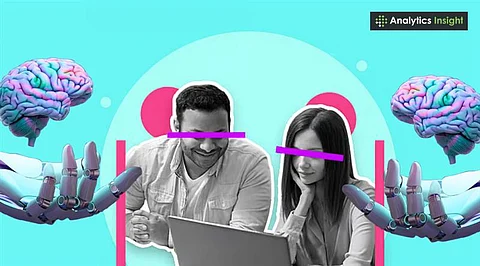

AI reduces data collection time from days to hours with automated processes.
AI tools can detect hidden patterns in data that manual checks may miss.
Human verification keeps AI data collection accurate and reliable.
AI is changing how information is gathered, organized, and understood. It can collect and sort large amounts of data, like product reviews or social media trends, in just minutes. This benefits not only large companies but also small businesses, researchers, and students who require accurate information promptly.
AI can perform repetitive tasks quickly than a human. It can read through a thousand sites, record hours of talk, or sift through survey responses without getting distracted. This allows less time to be spent on manual work and more time on analysis. It can also detect patterns that may not be noticed when the data is examined manually.
Prior to the utilization of AI tools, there must be an understanding of what information is needed. For instance, a marketing team might need social media trends, whereas a researcher would require transcripts of interviews.
Also Read: Data Collection Methods and Strategies for Effective Analytics
Each tool is designed for various types of data.
For interviews or conversations: Insight7 transcribes voice into text, identifies main themes, and structures them for reports. Otter.ai offers live transcription and indicates who spoke what.
For surveys: Qualtrics employs artificial intelligence to craft intelligent surveys and automatically analyze responses.
For web data: Octoparse, ParseHub, and Diffbot extract data from websites without programming required.
For data in images and videos: CVAT supports precise object labeling, which is excellent for training AI models for applications such as self-driving vehicles or medical imaging.
For crowd-supported projects: Toloka unites individuals across the globe to tag or label data.
For data shared in communities: OORT, Ocean Protocol, and Vana enable groups to share and exchange data securely.
A workflow is the sequence of steps from collecting data to analyzing it. Web scraping tools can gather information from websites, a cleaning tool can then remove duplicates or errors, and a visualization tool can present the results.
Also Read: Best Data Collection Tools: Empowering Smarter Decisions
Most AI platforms can run on an automated schedule, such as collecting new data daily or updating a dashboard automatically. This keeps the data up to date without extra work. Human verification is still needed to make sure the AI is not making mistakes.
Once collected, the data can be stored in Excel, Power BI, or KNIME. These tools help turn numbers or text into charts, graphs, and summaries.
AI saves time. Tasks that take days can be done in a few hours.
AI can process millions of pieces of information without slowing down.
Some AI tools can find links in data that are hard to see.
Test the tool with a small project before using it for extensive data.
Keep personal or sensitive data safe and follow privacy rules.
Use different tools if needed, like mixing surveys with image tagging.
Always check the AI’s results to make sure they are correct.
Artificial intelligence collects data faster, simplifies the work, and improves accuracy. In both small research projects and large business initiatives, the right tools transform raw data into clear and actionable insights.
Having set goals, using the right platforms, and including human checks keeps the work fast and dependable. As more AI tools are created, there is almost always one that fits the job, whether the data is text, numbers, images, or a combination of these.
